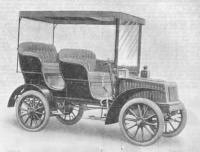
With electric cars poised to play an ever-greater role in getting us from A to B, it is interesting to note that engineers were already aware of their commercial potential more than a century ago.
An article in The Engineer’s 1903 archive described the work of Campagnie de l’Industrie Electrique of Geneva, which had successfully developed a double electric Phaeton.
The car had a top speed of 12.5mph (20kph) and was fitted with large batteries made up of 40 cells and a capacity of 120Ah.
’For a speed of 20kph, the current required is about 40A, so that with one charging the car can run for, say, three hours and cover a distance of60km or 37.5 miles,’ said the report.
The motor was placed over the front axles and connected to a spindle through gearing with a ratio of 1:3. The starting mechanism formed a hand wheel fixed to the steering wheel. The article described the vehicle as ’bearing considerable resemblance to a petrol car’.
“There are few nicer vehicles to ride in than electric carriages”
It added: ’There are few nicer vehicles to ride in than electrically driven carriages, although, of course, they have their limitations. Some of these are the circumscribed radius of action and the nuisance of having to get the battery charged.’
The reporter said that these difficulties could be overcome. ’We are certainly of the opinion that our manufacturers would do well to turn their attention more in this direction.’
Despite huge leaps in innovation, battery power and performance remain the biggest concerns for consumers. But in the race to develop a commercially viable electric car, it seems that engineers in 1903 were not far wrong in their predictions.




Project to investigate hybrid approach to titanium manufacturing
What is this a hybrid of? Superplastic forming tends to be performed slowly as otherwise the behaviour is the hot creep that typifies hot...